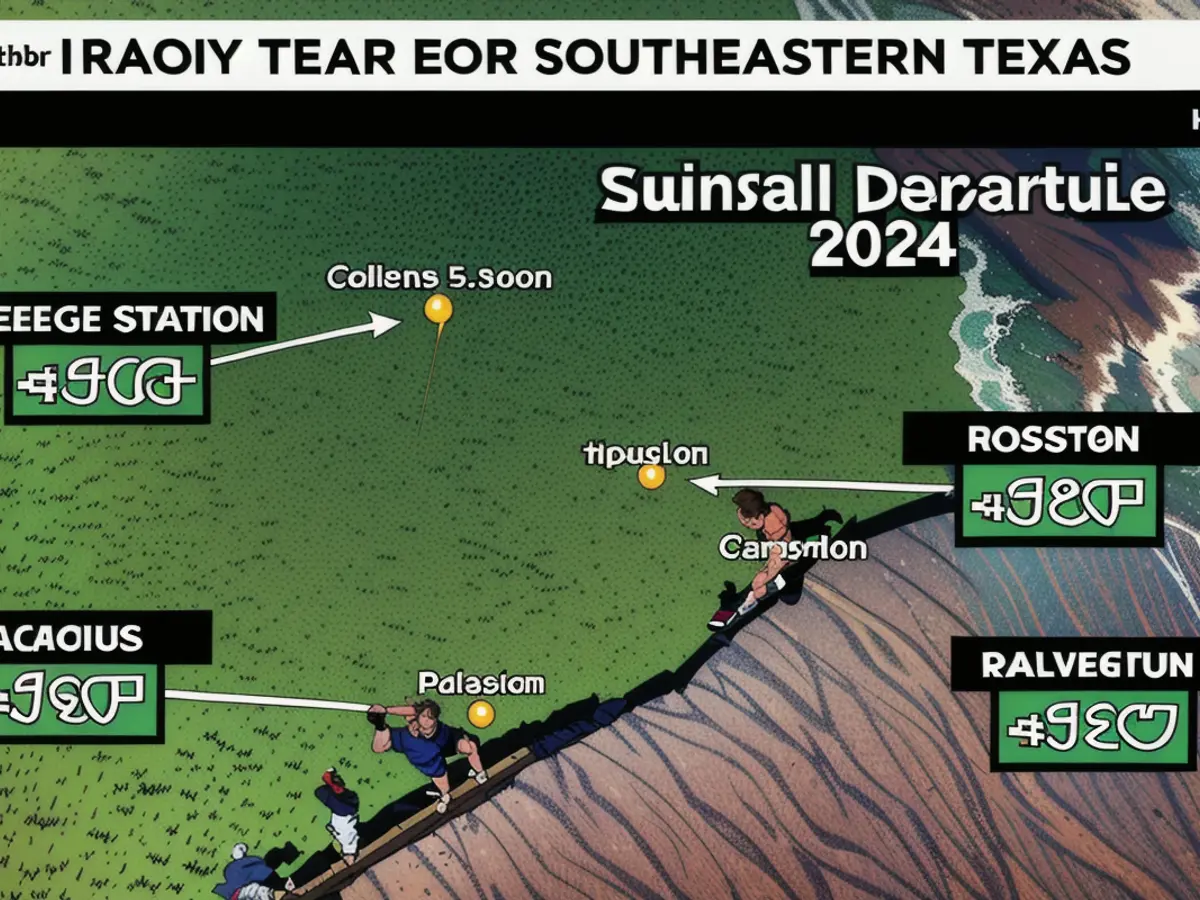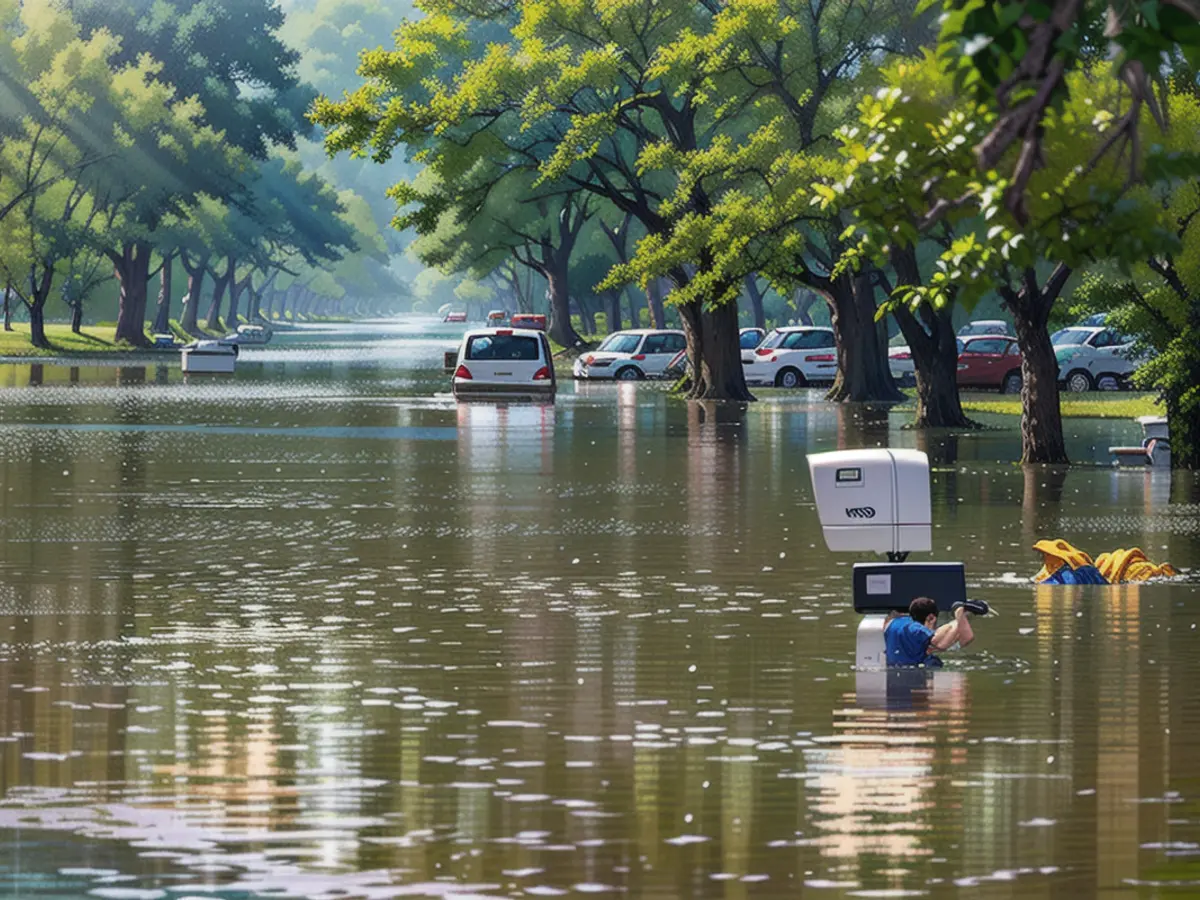"A terrifying prediction suggests major flooding in already saturated Texas and Gulf Coast areas."
Large amounts of rainfall, ranging from 20 to 30 inches, have been occurring in the region recently, causing the ground to become soaked and rivers to swell, increasing the flood risk significantly. This week, there's the potential for even more rainfall to occur, thus making the situation worse.
According to the Weather Prediction Center, the forecast predicts extreme amounts of rainfall accompanied by several rounds of storms. This scenario is described as a "nightmare" for the Gulf Coast region, causing dramatic flash flooding due to multiple inches of rain falling within just a few hours. It's expected that Rivers may quickly become rivers, and small streams could easily overflow their banks.
The Weather Prediction Center has designated a Level 3 of 4 risk of excessive rainfall that could lead to flash flooding in eastern Texas, Louisiana, and Mississippi on Thursday. There's even a possibility for an upgrade to a Level 4 of 4 high risk of flood-causing rainfall by early Thursday, as authorities try to determine the areas in most danger.
Level 4 risks are extremely rare, but terrible flood damage and experienced by more than 80% of flood-related deaths in the US.
Understanding the advanced flood risk
Storms may form in a few areas in Texas from Thursday afternoon. They are expected to move south and east, reaching Louisiana and Mississippi late in the day. The heaviest storms may drop up to 3 inches of rain per hour.
Here's where the "training" of weather patterns comes in: The greatest threat for flooding will arrive when storms start to circle and consistently bombard the same regions. These "training storms" resemble a train continuously traveling over the same stretch of tracks.
Dangerous flash flooding is most likely in areas that experience multiple storms dumping 2 to 3 inches of rain per hour. The result could be high water levels on roadways, as well as small streams overflowing their banks.
On Friday, the soaking storms will move East and target the Gulf Coast.

Southern Alabama and Mississippi are under a Level 3 of 4 risk of excessive rainfall. A broad region from the Texas/Louisiana border to Florida and Georgia is classified as Level 2 of 4 risk.
Rainfall forecasts suggest torrential downpours on Thursday night that may last until Friday afternoon for parts of the Gulf Coast. The first half of Friday is likely to witness severe flash flooding in areas near the Texas/Louisiana border. Later in the day, more heavy rainfall could develop - which would just fan the flames, or floods in this case - in previously flooded regions.
Up to 6 inches of rain is expected from Texas through Georgia by Friday night, with a few areas potentially receiving more than half a foot of rain.
Wettest year ever?
The incoming rainfall will contribute additional moisture to an already impressive load of rainfall obtained this year along the Gulf Coast.
Several cities in the Southeast have received more than a half a foot of rain compared to what's typically seen in the initial months of the year. More than 60 cities, from Texas to western Georgia, are on pace for a top 5 wettest year to date. At the very least, eastern Texas cities are witnessing their second-wettest year, and Dallas the third-wettest.
In spite of the massive rainfall, this region has seen excessive rainfall that has eliminated any drought or dryness. However, meeting these needs doesn't come without its costs.
Earlier this month, approximately 2 feet of rain was recorded in just 5 days, causing parts of east Texas to become flooded. Hundreds of people, in addition to animals, were successfully rescued from the flooded areas. Some Texas rivers reached levels not seen since Hurricane Harvey in 2017. CNN's Monica Garrett contributed to this report.

Read also:
- Rain expected again: The situation in the flood areas remains threatening
- Continuous rain until Thursday: Concerns about collapsing dykes are growing in the flood areas
- Flood situation remains tense - more rain forecast
- Flood situation remains tense - weir on the Elbe is opened
Source: edition.cnn.com








